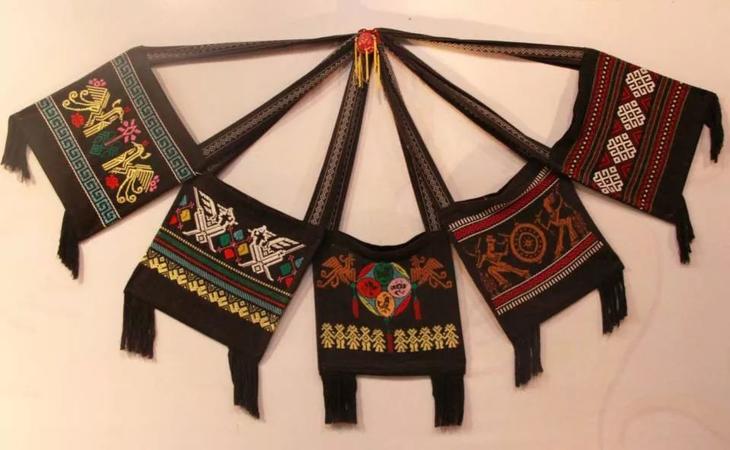30 Sep


Zhuang Brocade: A Cultural Treasure and Its Craftsmanship
Zhuang brocade is a remarkable traditional handicraft of the Zhuang ethnic group in China, carrying rich cultural connotations and demonstrating superb craftsmanship.
Cultural Significance
- Historical Heritage: The history of Zhuang brocade can be traced back to 6,000 years ago in the Neolithic Age, indicating that the ancestors of the Zhuang ethnic group had already mastered the textile technology at that time. Over the long course of history, it has witnessed the development and evolution of the Zhuang ethnic group. In the Han Dynasty, the dyeing and weaving industry in the Zhuang ethnic area developed rapidly. By the Tang Dynasty, various fabrics woven by the Zhuang people had become tributes to the imperial court. The real Zhuang brocade emerged in the Song Dynasty. It was listed as a national intangible cultural heritage in 2006, which is a recognition of its important historical and cultural value.
- Symbol of Ethnic Culture: Zhuang brocade is a vivid expression of the Zhuang ethnic culture. It reflects the Zhuang people's worship of nature, their pursuit of a better life, and their unique aesthetic concepts. The patterns and colors of Zhuang brocade are full of ethnic characteristics, such as the patterns of dragons, phoenixes, butterflies, flowers, and grasses, which all carry the good wishes and expectations of the Zhuang people. These patterns not only have artistic beauty but also are carriers of ethnic culture and spirit.
- Social Function: In the past, Zhuang brocade was not only a daily necessity and decorative item for the Zhuang people but also an important part of the dowry for Zhuang girls, symbolizing happiness and prosperity. It played an important role in people's lives and social interactions, strengthening the connection and identity of the ethnic group.
Craftsmanship
- Materials: The main materials used in Zhuang brocade are cotton yarn and silk. The silk is carefully processed by the weavers themselves, including steps such as sericulture, cocoon picking, reeling, bleaching, and dyeing. The cotton yarn also goes through processes such as cotton planting, seed removal, cotton fluffing, spinning, dyeing, and sizing. The dyes are made from local plants and colored soil, such as red from madder, carmine, and sappanwood; yellow from yellow mud and turmeric; blue from indigo; and green from tree bark and green grass.
- Tools: The loom used for Zhuang brocade is a small wooden loom that has been finalized through continuous improvement over a hundred years. It has a simple structure, is lightweight, easy to operate, and convenient to use, but the efficiency is relatively low. The whole loom is composed of a fuselage, a yarn loading part, a yarn lifting part, a jacquard lifting part, and a beating-up part.
- Weaving Process: The weaving of Zhuang brocade is a complex and time-consuming process. First, the artisan designs the pattern and uses a jacquard ruler to pick out the pattern. Then, the pattern is arranged on the pattern holder with weaving bamboos and warping threads. During weaving, the pattern is transferred one by one according to the arrangement on the pattern holder through the traction of the warp threads. The weaving method is to use the cotton or hemp yarn as the warp and the dyed silk as the weft, adopting the method of continuous warp and broken weft to interweave. This makes the pattern on both the front and back of the fabric symmetrical, covering the ground tissue completely and increasing the thickness.
In conclusion, Zhuang brocade is a precious cultural heritage of the Zhuang ethnic group, and its unique craftsmanship and cultural connotations make it an outstanding representative of Chinese traditional handicrafts. Protecting and inheriting the craftsmanship of Zhuang brocade is of great significance for preserving ethnic culture and promoting the development of traditional handicrafts.

